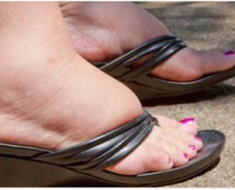Have you ever seen your child sitting in what is called the “W” position? While this is a common way for children to sit, it causes problems in their bodies as they continued to grow and develop.
Most children will move into and out of the W-positions while playing. But if parents don’t curb the behavior or discourage it, a child’s motor skills and hand dominance could be negatively affected.
First, you need to be able to identify this position. Kids will be seated on their bottoms, with their knees forward, legs bent, and their feet off to the side. When looking head on, you should be able to trace a W from foot to foot.
Keep reading to learn how W-sitting can affect a child’s development and put undue stress on their young bodies.
A child may seek out a W seat if they do not have strong motor skills. The position does not encourage hand dominance and can make them weaker in adult life.
“It’s easy to see why this position appeals to so many children,” PediatricServices.com writes, “but continued reliance on W-sitting can prevent a child from developing more mature movement patterns necessary for higher-level skills.”
W-sitting can encourage children to develop orthopedic problems. They might also experience delayed development of their postural control and stability, or refined motor skills.
Besides potentially inhibiting a child’s development, this sitting position also puts undue stress on parts of their bodies. They weaken their hip abductors, hamstrings, internal rotators, and heel cords. Because of these weakened joints, children who favor W-sitting experience more dislocations.
They are also more prone to injury because it can tighten and shorten muscles in the hips and legs. Besides that, it can also hurt their motor coordination, balance, and other important bodily skills.
W-sitting weakens a child’s trunk muscles. This can encourage bad posture from childhood into adulthood. It can also force a child to make strange shifts in their weight while they play.
Now that you know the risks associated with W-sitting, you probably want to stop your kids and grandkids from indulging in it. Like any bad habit, you need to correct the behavior consistently. Recognize when your child is sitting in a healthier way and reward them.
“The most effective (and easiest) way to prevent a problem with W-sitting is to prevent it from becoming a habit it the first place. Anticipate and catch it before the child even learns to W-sit,” PediatricServices.com writes. “Children should be placed and taught to assume alternative sitting positions. If a child discovers W-sitting anyway, help him to move to another sitting position, or say, “Fix your legs.” It’s very important to be as consistent as possible.”
In the video below from Penfield Children, you’ll learn more about W-sitting and how to change their behavior to improve their health. Check it out so you have a great reference to start.
Did you know that W-sitting should be discouraged?
Please SHARE THIS PUBLIC HEALTH ANNOUNCEMENT with any parents or grandparents of young children that you know!






